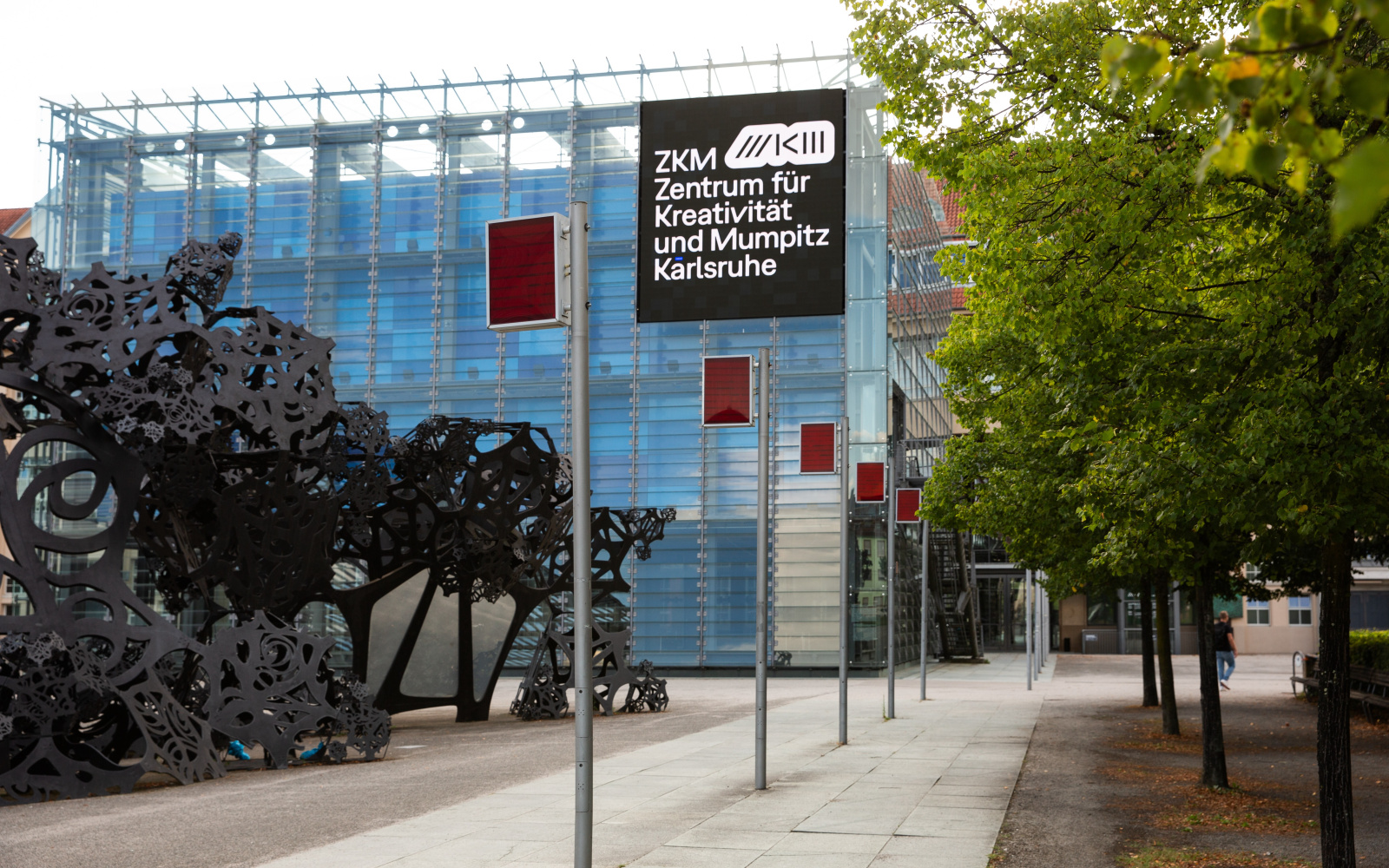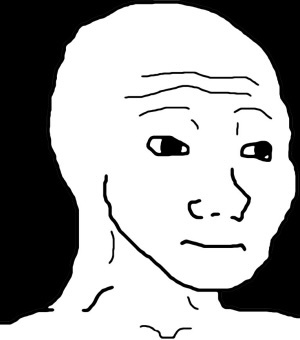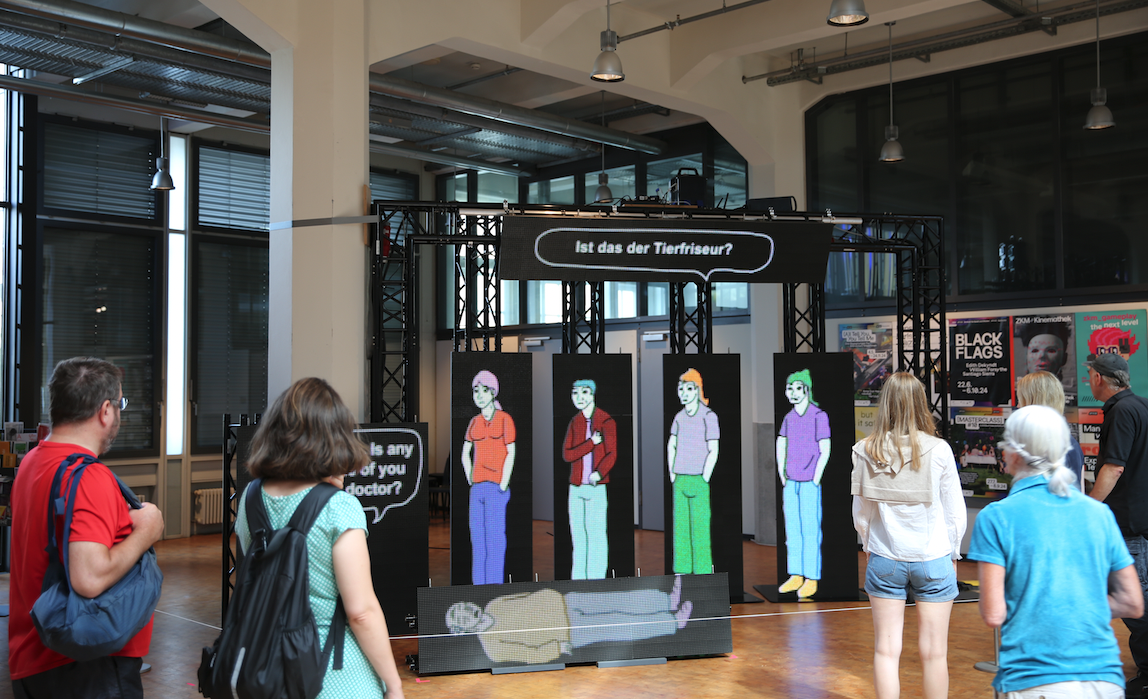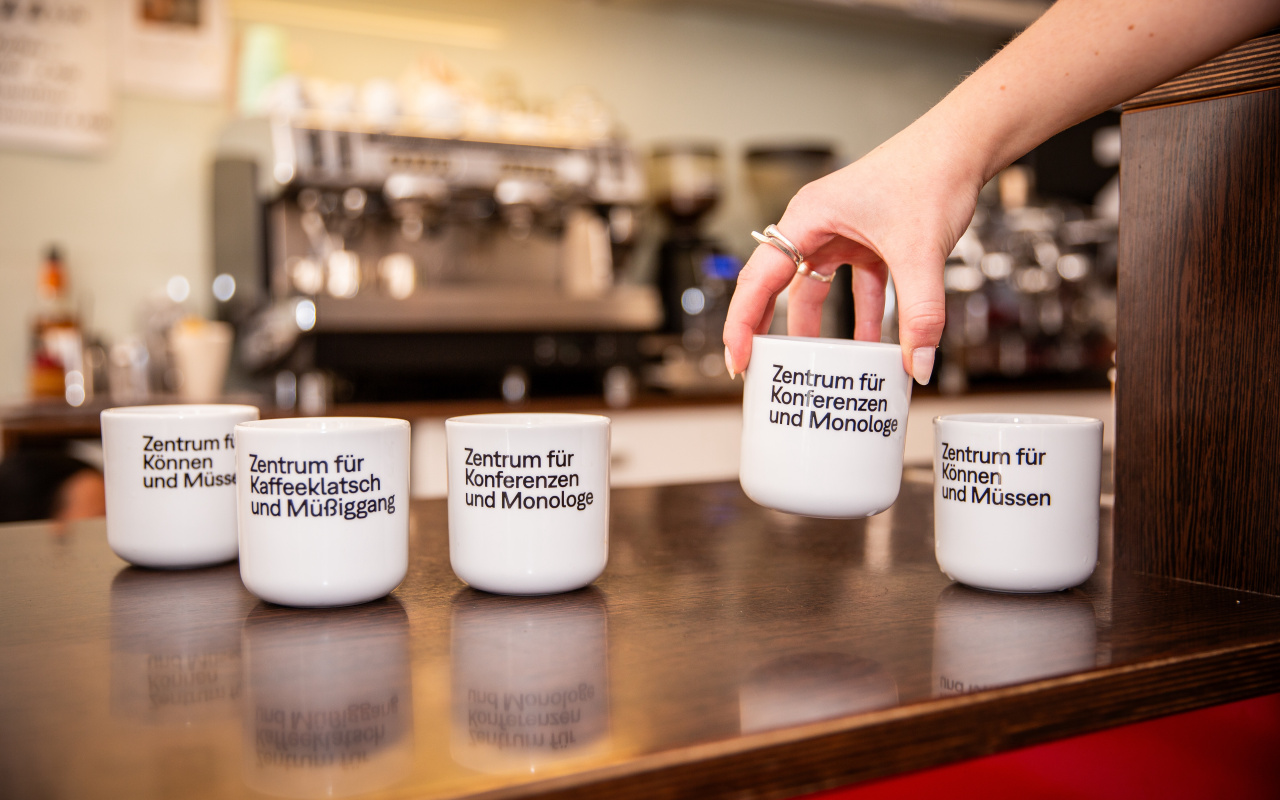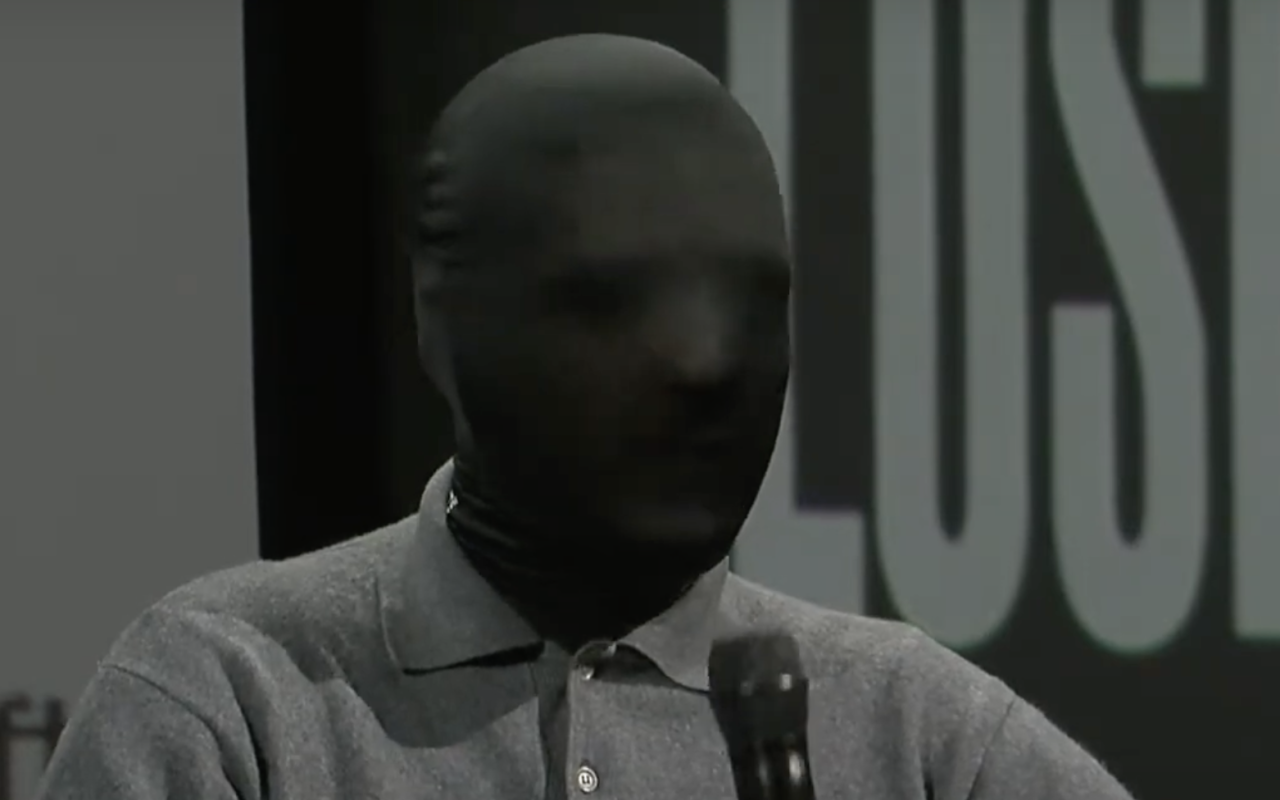What happens when an art institution becomes a meme template? In a fusion of art and internet culture, the artist Cem A. has transformed the Center for Art and Media (ZKM) into a memetic spectacle. As part of the action "Zentrum für Kritik und Memes" ["Center for Critique and Memes"], he reinterprets the acronym ZKM and explores the meaning of memes in an institutional context in an installation.
Zentrum für Kritik und Memes
An Intervention and Exhibition with Cem A.
July–October 2024
The Intervention: The Center fror Critique and Memes
The first chapter playfully transforms the acronym of the ZKM into a series of speculative and satirical names through a parasitic intervention. The spectrum ranges from the critical "Center for Cultural Cutbacks and Extra Work" to the absurd "Center for Curiosities and Mosquito Bites". These names were subtly infiltrated into communication both on site and online, challenging the identity of the institution while inviting outward reflection on the role of a cultural institution. The result was a wide range of speculation and questions from visitors and journalists about what the name change was all about and whether the ZKM had possibly been hacked. Until the announcement of the collaboration with Cem A., the ZKM did not release any information.
From digital meme to physical installation
How do memes that can be freely used by everyone on the internet fit into a museum space? According to Cem A., it makes little sense to show a meme as a print or painting in an exhibition. After all, the most important thing is not the image we see, but how it circulates on the internet, i.e. what users make of it and how they react to it.
What Are Memes?
Memes are digital text-image compositions that are appropriated, changed and shared by countless users on the internet, which means that their meaning is constantly evolving. They can criticize and comment on social trends in a humorous (sometimes bizarre) way and often get to the heart of the matter. In this respect, memes are one thing above all - tools of criticism.
Cem A. is looking for ways in which the digital artwork and the physical space can reinforce each other and together create something that is more than just a representation of the other. His installation in the foyer of the ZKM is a life-size version of a meme, based on the famous model "Year 2030". The scene, populated by Wojaks (popular meme characters with originally sad expressions), subtly criticizes social and technological developments. The texts in the speech bubbles were created in collaboration with ChatGPT.
A.'s intervention and installation use the familiar structure of memes to address serious issues such as precarious work, elitism and the impact of technology on society. The installation highlights the absurdity and irony of our digital age and hints at a dystopian future characterized by technological advances and societal decline and decay.
The Situational Meme in the ZKM Foyer
The installation examines how memes could develop and influence society and invites visitors to reflect on their own role in this process. Located in the center of the ZKM foyer, it is deliberately placed outside the museum space. Here, the work is not isolated, but functions within a larger dynamic network. Visitors buy tickets, take part in conferences, drink coffee or have conversations. The space can be used as a place of dialog and debate and, like the realm of memes, can become a place of participation. The central question here is whether we want to be passive observers or active participants in shaping our future.
Memes in Art Institutions
The "Center for Critique and Memes" shows how complex it is to exhibit internet culture in traditional art institutions, but also emphasizes the relevance of this art form. While memes represent a powerful digital form of commentary and critique, their accessibility and ubiquity challenge conventional notions of art. However, Cem A.'s exhibition proves that memes can find their place in these institutions, fostering dialog and engagement with contemporary issues.
Marijn Bril and Cem A. on the intervention at ZKM
Zentrum für Kritik und Memes Booklet
- Download here (1.89 MB)
About the Artist
Cem A. is an artist with an anthropological background. He is known for running the art meme account @freeze_magazine and for his site-specific installations. His work explores themes of survival and alienation in the art world, mostly through a hyper-reflective lens and collaborative projects.
Cem A.'s selected solo exhibitions and installations include the Louisiana Museum, Barbican Centre, Berlinische Galerie, Künstlerhaus Bethanien and Museum Wiesbaden. His work has also been shown at documenta fifteen, Istanbul Modern, Mudam Luxembourg, Klima Biennale Vienna and the 14th Biennial of Young Artists at the Museum of Contemporary Art Skopje. He has lectured at the Royal College of Art London, HEAD Geneva, HDK Valand and the Berlin University of the Arts.
Imprint
Artist: Cem A.
Curated by: Lilli Roser
Technical Team: Marc Schütze, Martin Mangold, Claudius Böhm
Video studio: Christina Zartmann, Lisa Michel, Andy Koch, Moritz Büchner
Kommunication & Marketing: Anne Thomé, Marlen Ernst, Sabine Jäger, Lilli Roser, Emma Teuscher, Anouk Widmann, Hannah Adam, Ingrid Maria Kurz, Johanna Theresia Oelmaier
Merchandise: Almut Werner, Tatjana Draskovic, Ophelia Kühn
Publication:
Text: Marjin Bril
Editorial: Ulrike Havemann, Jens Lutz, Miriam Stürner, Lilli Roser
Grafic design: studio +fronczek
Merchandise Models: Alistair Hudson, Christof Hierholzer, Dan Samuel Pariyarathu, Gisbert Laaber, Helga Huskamp, Max Clausen, Lilli Roser, Regine Frisch, Svenja Liebig, Tobias Klingenmayer, Yasha Jain
With great thanks to the whole ZKM Team!
